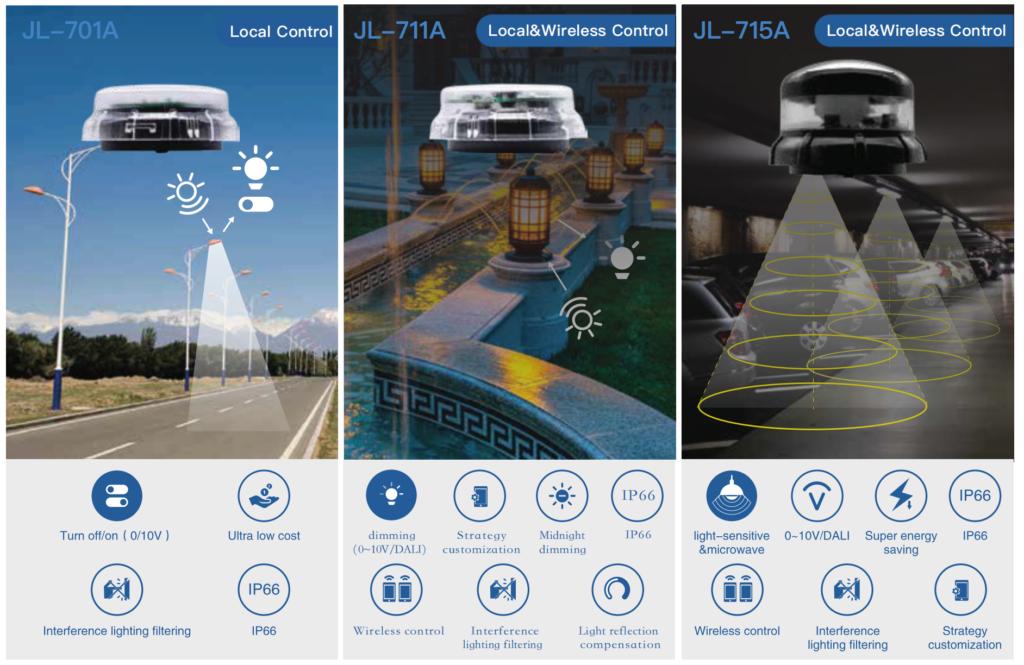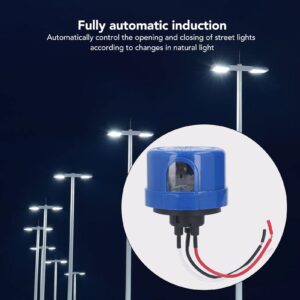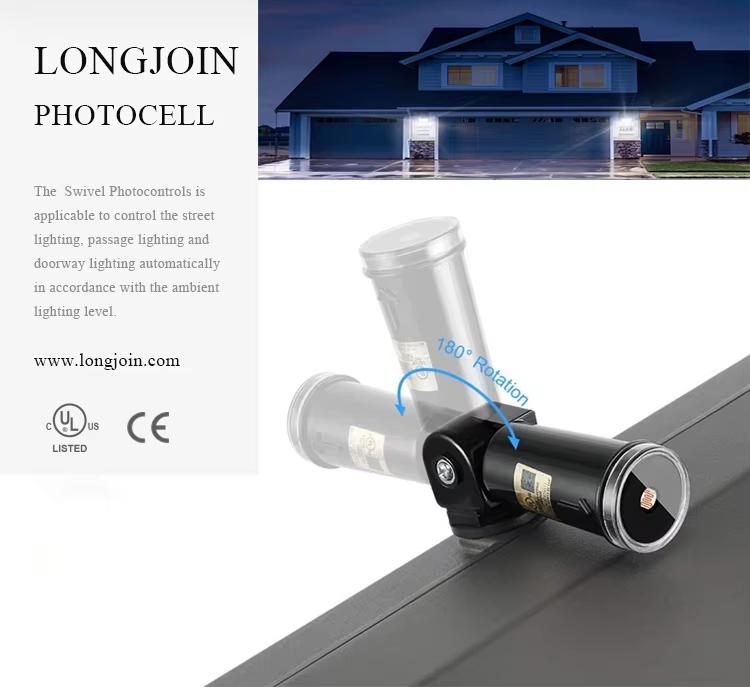Outline
- Introduction
- What Makes Photosensor Essential for Modern Street Lighting Systems?
- Why Do Outdoor Street Light Photocontrollers Fail Prematurely?
- How To Choose a Reliable Light Sensor Control for Outdoor Use?
- Why Are LONG‑JOIN Photocells Considered a Trusted Long-Life Solution?
- Final Words
Seeing your street lights flickering or stopping working too soon? Sometimes, photocell switches fail too soon, while they seem built to last. These small devices are meant to keep our streets safely lit every night, yet many stop working sooner than expected.
From harsh weather to unstable power, multiple factors can shorten their lifespan. When that happens, maintenance costs rise, and city streets go dark.
So how can these failures be avoided? This guide explains why photocell lighting sensors fail. We will also help you with how to choose a reliable, long-lasting solution for outdoor lighting systems.

What Makes Photosensor Essential for Modern Street Lighting Systems?
Lighting controls sense ambient light and adjust streetlights automatically. They switch lights on at dusk and off at dawn. This replaces manual control.
Further, automatic switching keeps illumination consistent when needed and stops it when not. It yields multiple benefits, including:
- Reduced energy waste in outdoor lighting systems
- Ensures safe visibility for pedestrians and drivers
- Improves system efficiency by matching lighting to real-world brightness conditions
In smart-city networks, outdoor photocell light sensors go beyond simple control. They connect with IoT systems for data exchange, remote operation, and dimming control. Cities can monitor and automate lighting in real time. This supports sustainability goals and streamlines operations across large urban infrastructures.
Why Do Outdoor Street Light Photocontrollers Fail Prematurely?
Photocell failures raise maintenance costs, compromise safety, and damage reputation. A street-lighting circuit that fails to turn on at dusk or stays on all day signals deeper issues. Below, we explore the root causes of premature failure and what to watch for.
Harsh Outdoor Environments Affect Photocell Lifespan
Photoelectric sensor faces extreme environments like:
- Temperature swings
- Intense UV exposure
- Heavy rain
- Salt spray; and
- Humidity
Each condition accelerates housing degradation and internal corrosion. Housings must use UV-stable polymer. Gaskets should be sealed. Lastly, the high IP ratings are a must to prevent moisture ingress and salt damage.
Electrical Surges Play in Photocell Failure
Power surges impose high currents and voltages on photocell circuitry. These transients can burn out relays or degrade sensors.
Effective dusk-to-dawn photocell sensors include MOV (Metal Oxide Varistor) protection rated for ~10 kA/20 kV or higher, to clamp surges and preserve internal electronics.
Low-Quality Components
Cheap relays, low-grade plastics, and inadequate sealing shorten the lifetime dramatically. One study reported photocells failing “stuck on/off” or water ingress within months. Over a system’s life, this leads to high replacement and labour costs—undermining the energy-saving benefits of automated lighting.
Importance of Zero-Cross Switching Technology
Switching at current or voltage peaks stresses relays and generates arcs. This reduces contact life and increases thermal stress.
Zero-cross technology ensures switching occurs at the AC waveform’s zero voltage point. This minimizes inrush current, ultimately extending the life of the photocontrol receptacle and lamp driver.
Improper Installation or Compatibility Causes Malfunction
This could be a major reason. Common issues include:
- Installing the sensor where it faces artificial light or reflections → mis-detection.
- Wiring errors or using an incompatible photocell with certain lamp loads (e.g., LED driver vs HID ballast) → overheating or no-operation.

How To Choose a Reliable Light Sensor Control for Outdoor Use?
To avoid photocell failures, evaluate demanding technical and specification criteria before purchase.
Certifications Ensure Quality
Choose photocells certified to international standards. These include:
- UL 773
- ANSI C136.10
- Zhaga Book 18 or Zhaga-D4i
Compliance with these regulations ensures socket interchangeability and smart-node readiness. Certified products also simplify global market acceptance and aid warranty claims. The table below summarizes major standards and their significance in outdoor lighting control.
| Standard | Region of Recognition | Core Focus |
| UL773 | North America | Photocontrols for lighting |
| ANSI C136.10 | North America | Twist-lock interface design |
| Zhaga Book 18 | Global | Modular lighting interfaces |
| IEC 60529 (IP Rating) | Global | Ingress protection |
| ISO 9001 | Global | Quality management system |
Materials That Offer the Best Environmental Resistance
Manufacturing material is critical for the life of a light photocell sensor. Ensure the units are built with a polybutylene terephthalate. Their dome should be of UV-stabilized polycarbonate for heat resistance. Their housing should meet an IP65 or IP66 rating and pass salt-spray. Lastly, UV ageing and humidity tests are crucial for harsh outdoor conditions.
Below is a table showcasing materials commonly used in high-end photocells and their protective roles.
| Material | Function | Environmental Resistance |
| PBT (Polybutylene Terephthalate) | Structural base material | High thermal stability and corrosion resistance |
| UV-Stabilized Polycarbonate | Transparent dome cover | Prevents yellowing and cracking under sunlight |
| Silicone Gasket | Sealing and waterproofing | Withstands extreme temperatures and humidity |
| Stainless Steel Screws | Fastening components | Resists rust and oxidation |
Surge Protection
In regions with frequent power transients, photocontrollers are always prone to damage. High-quality photo switch sensors integrate a MOV or similar protection to absorb surges and safeguard internal circuits. Over time, this reduces failure-related maintenance and improves safety.
Smart Photocells Improve Lighting Efficiency
Modern photocell light switches support wireless communication protocols, as discussed in the table below. These allow:
- Remote monitoring
- Dimming control
- Fault detection; and
- Integration into smart-city networks
When deployed, they deliver higher operational efficiency and enable predictive maintenance.
| Protocol | Communication Range | Power Consumption | Data Speed |
| LoRa | Up to 10 km | Very Low | Low |
| ZigBee | 50–100 m | Low | Moderate |
| NB-IoT | 1–10 km | Moderate | Moderate |
| Wi-Fi | 100 m | High | High |
| Bluetooth Mesh | 50 m | Very Low | Low |
OEM/ODM Options
Reliable suppliers offer OEM/ODM flexibility. This means customised housing colour, logo, packaging, and specification tweaks for your brand.
Customisation adds value and helps you differentiate while maintaining consistent quality through the manufacturing process.
Why Are LONG‑JOIN Photocells Considered a Trusted Long-Life Solution?

LONG-JOIN a Market Leader in Photocell Manufacturing
LONG-JOIN has over 20 years of expertise in lighting control and outdoor sensor manufacturing. The company reports having captured a significant share of the U.S. market, around 50 %, for certain photocell segments.
They partner with recognised global lighting brands and meet mounting standards like ANSI and NEMA formats.
Technical Advantages That LONG-JOIN Photocells Offer
LONG-JOIN products are compliant with UL, CE, and ISO standards, ensuring regulated components and production quality.
They incorporate advanced features like zero-cross switching, surge protection (MOV devices), and multi-voltage support (e.g., 120–277 V) in models like JL-205C. The product portfolio covers:
- Twist-lock photocells (ANSI/NEMA format)
- Wire-in photocontrols for retrofit luminaires
- Zhaga Book 18/series smart module-ready receptacles and sensors
- Smart photocells with IoT/wireless capabilities
LONG-JOIN Ensure Quality and Consistent Supply
LONG-JOIN’s manufacturing base includes a 38,000 m² facility in Zhejiang (Haiyan County) with ISO 9001 certification and automated production lines.
The company emphasises strict testing protocols and has dedicated R&D and laboratories for outdoor lighting control. They also support full OEM/ODM customisation—housing colour, branding, packaging, and functions—for lighting manufacturers and lighting contractors.
Final Words
Reliable photocells are vital for energy-efficient and safe outdoor lighting. Choosing certified, well-built models ensures long service life and reduced maintenance. For dependable performance and consistent supply, Chi-Swear offers Long-Join photocontrollers trusted by global lighting manufacturers for their proven durability and smart control compatibility.
External Links
- https://iec.ch/ip-ratings
- https://en.wikipedia.org/wiki/Varistor
- http://www.julixing.com.cn/en/new/new-58-907.html
- https://www.nema.org/docs/default-source/standards-document-library/ansi-c136-10-2017-contents-and-scope.pdf?sfvrsn=36d2efb_2
- https://www.zhagastandard.org/?view=article&id=64:book-18&catid=10
- https://www.iso.org/standard/62085.html
- https://en.wikipedia.org/wiki/LoRa
- https://en.wikipedia.org/wiki/Zigbee
- https://en.wikipedia.org/wiki/Narrowband_IoT






